This post may contain affiliate links. Please read our disclosure policy. As an Amazon Associate, I earn from qualifying purchases.
This skillet salmon with tarragon cream sauce is proof that you don’t need a long list of ingredients or hours in the kitchen to make a dinner that feels a little elevated. The sauce is rich, flavorful, and just fancy enough to make it feel special, but the recipe itself is straightforward.
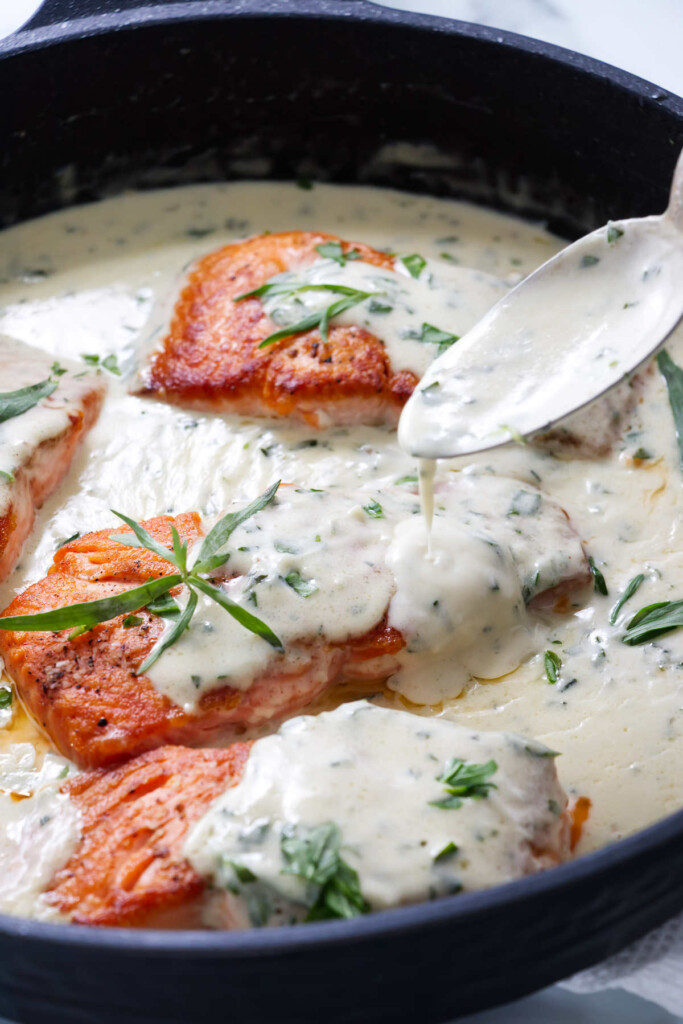
This is the kind of dinner that works just as well for a relaxed weeknight meal as it does when you’re having someone over and want to serve something a little more impressive, without the stress. Serve it over pasta or garlic butter rice.
Here’s Why This Creamy Tarragon Salmon Recipe Works
- Quick pan sear = perfect texture. A golden crust on the outside, tender flakes inside. No oven, no hassle.
- That sauce though. A rich, velvety lemon tarragon cream sauce that clings to the salmon without overpowering. (I use a variation of my tarragon cream sauce in other dishes too, it’s endlessly versatile.)
- Wine or no wine—your call. The flavor holds up with or without it, so there’s flexibility.
- The salmon finishes in the sauce. A final simmer in the pan keeps the salmon juicy and infuses it with even more flavor.
If you’re in the mood for something a little more decadent, try my Salmon Oscar, topped with crab, asparagus, and a rich béarnaise-style sauce.
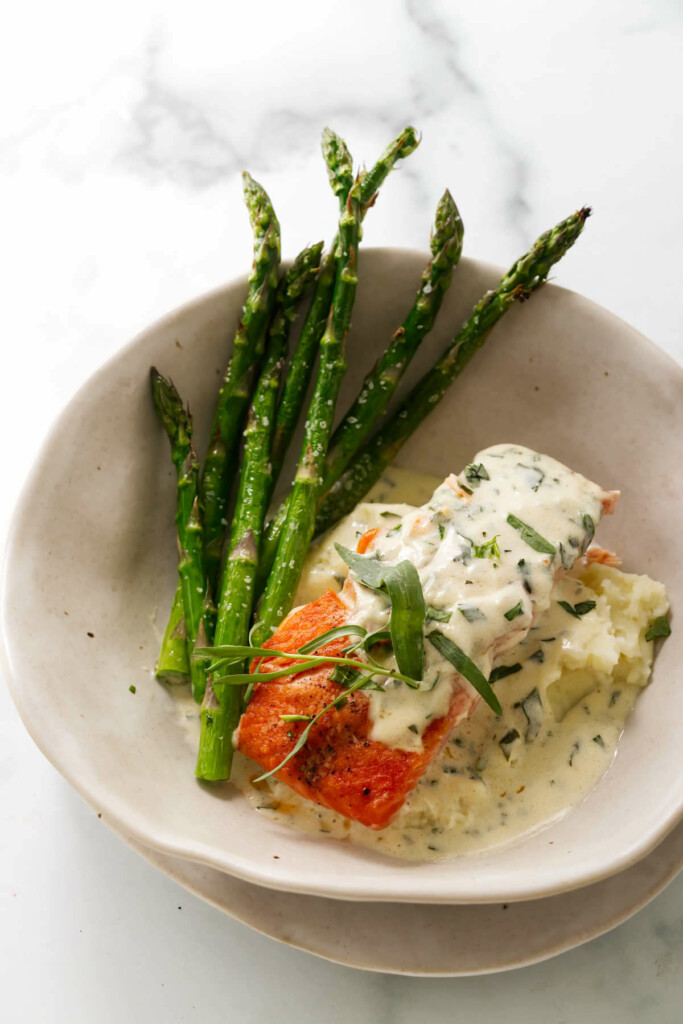
The Ingredients
- Meat: Salmon fillets
- Produce: Garlic, Lemon juice, Fresh tarragon
- Pantry: Vegetable oil, Chicken broth, Dijon mustard, Honey
- Spices and Seasonings: Salt, Black pepper
- Refrigerator: Butter, Heavy cream
- Other: Dry white wine (optional)
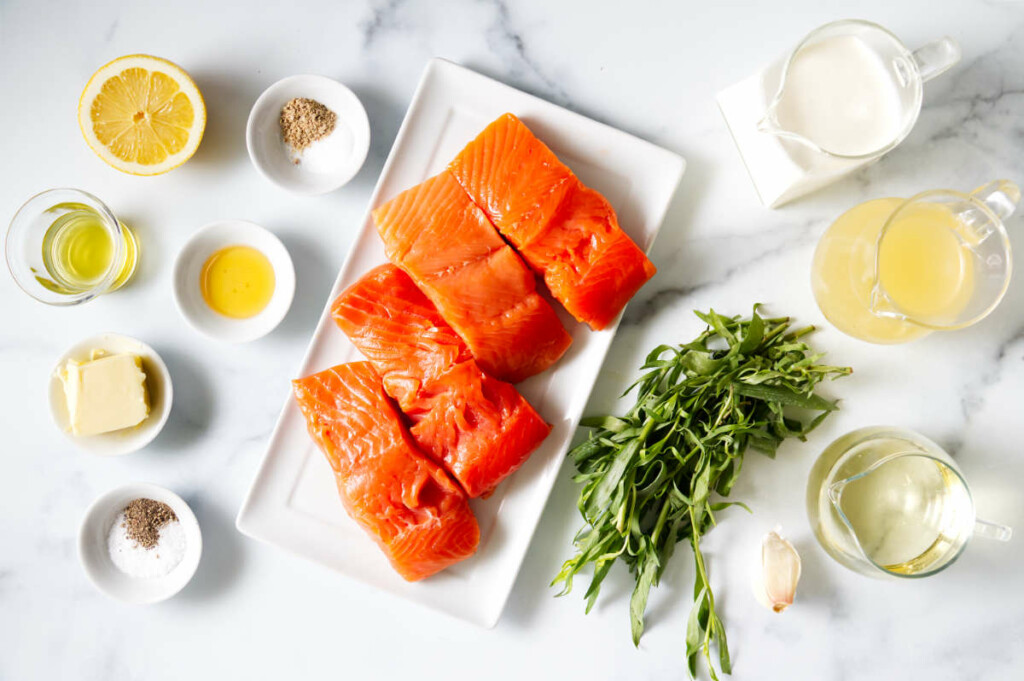
Recipe Variations
Herb Swap: Try fresh dill or chervil in place of tarragon if that’s what you have on hand. It’ll change the flavor, but it still works. If you enjoy this combo, you might also like our Creamy tarragon chicken. Same silky sauce, different protein.
Add Mushrooms: Sauté 1 cup of sliced mushrooms in the butter before adding garlic. It adds a little earthiness to balance the sauce.
Creamy Tarragon Salmon Pasta: Toss 8 ounces of cooked pasta into the sauce and coat well. Nestle the salmon into the saucy pasta.
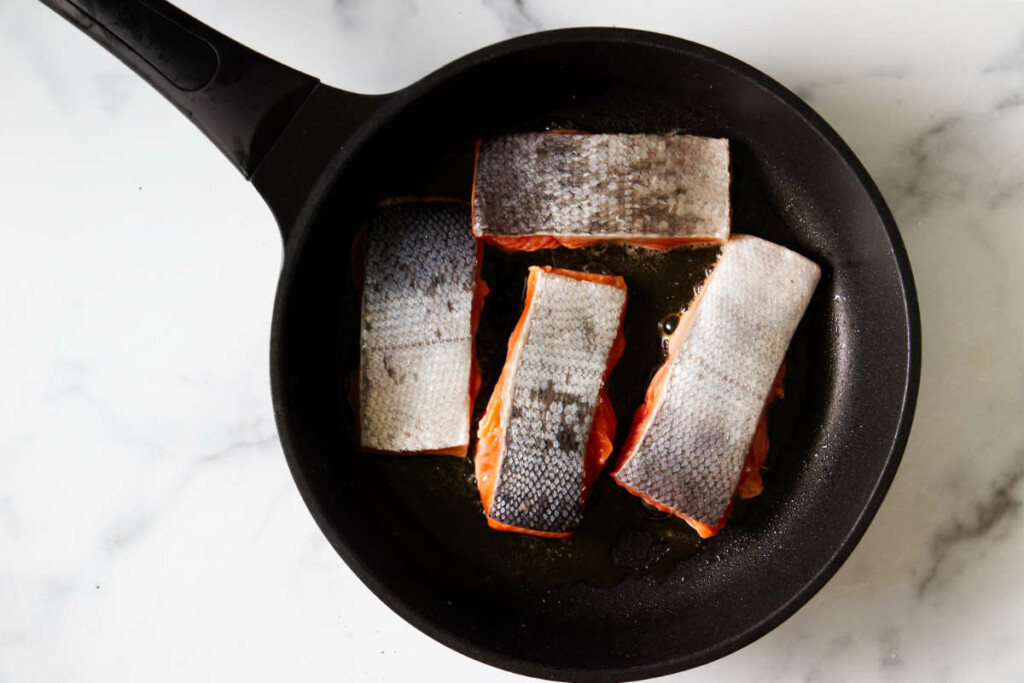
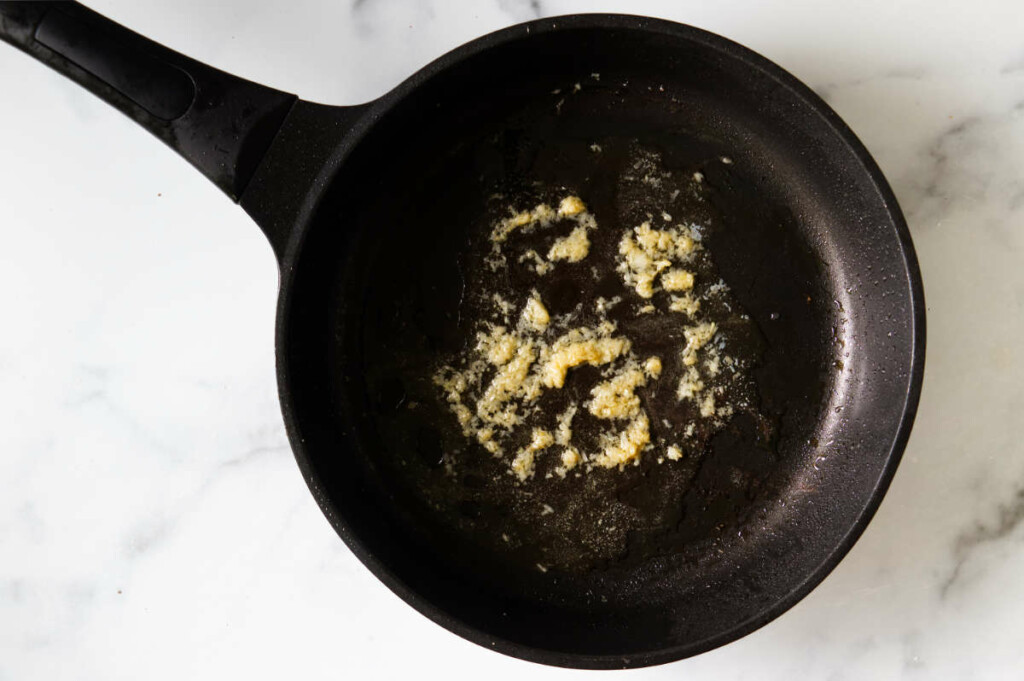
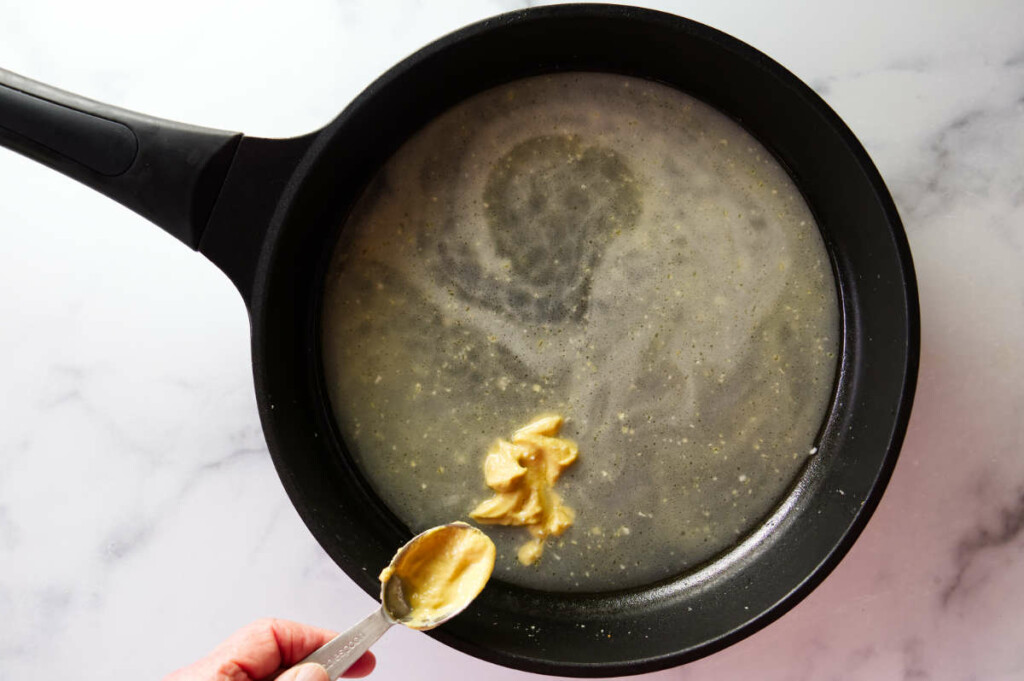
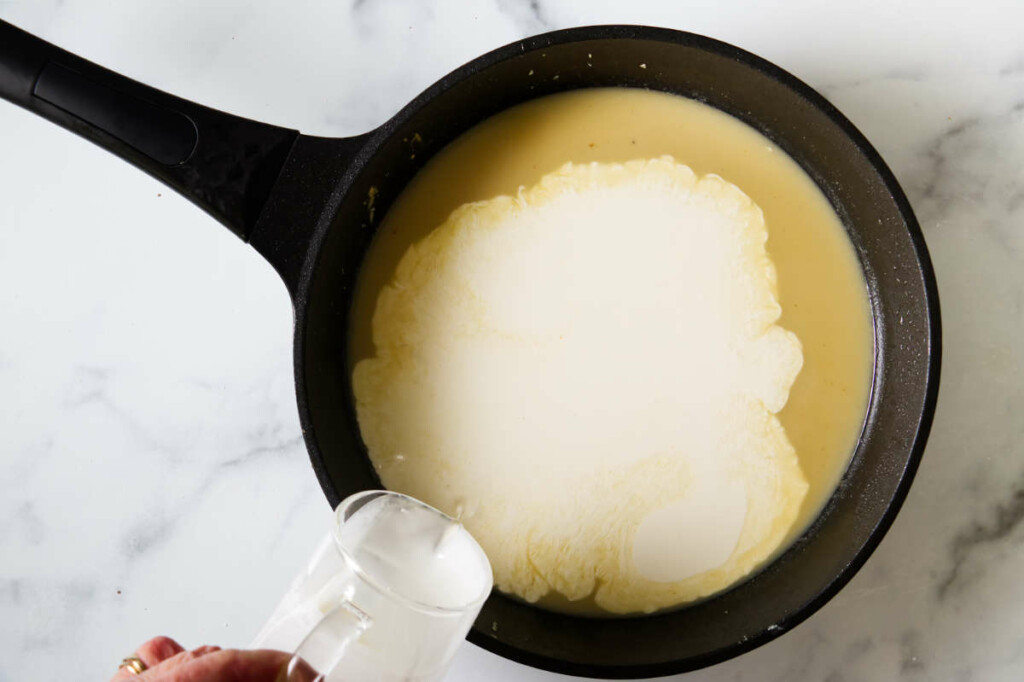
Recipe Tips
- Don’t overcook the salmon. Sear it until just shy of done, it’ll finish cooking when you return it to the sauce.
- Let the sauce simmer gently. You want it creamy, not curdled. Keep the heat low once the cream goes in.
- Use a fish spatula if you have one. It’ll help lift the salmon cleanly from the pan without tearing the fillet.
- Fresh tarragon > dried. The flavor difference is noticeable, especially in a sauce like this where the herb plays a starring role.
Storing and Reheating Leftovers
Refrigerate: Store leftover salmon and sauce in an airtight container for up to 3 days. Keep the sauce separate if you can, it reheats better that way.
Freeze: Freezing is not ideal. The cream sauce tends to separate once thawed, and the salmon texture suffers. Skip the freezer for this one.
Reheat: Gently warm the sauce in a skillet over low heat. Add a splash of broth or cream if it’s too thick. Add the salmon just at the end to warm through without drying it out.
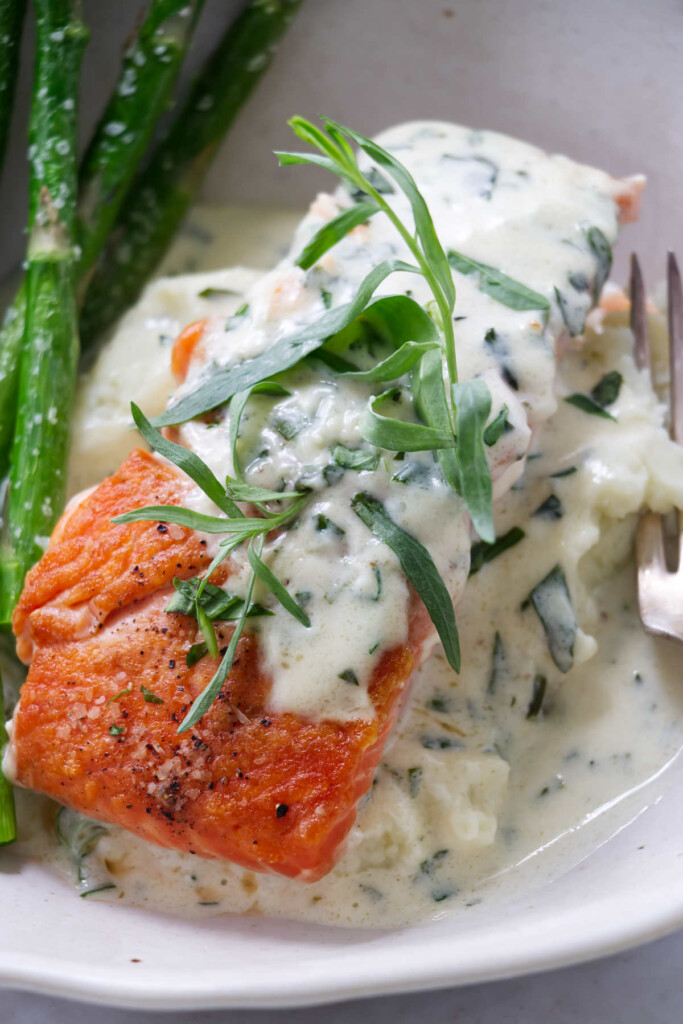
Restaurant-Worthy Tarragon Salmon
This salmon in tarragon sauce is one of those recipes that feels a little elevated, but it doesn’t ask much of you in return. It’s rich, bright, and balanced with just the right amount of flair. Keep it in your back pocket for when you want something that looks like a restaurant dish but doesn’t take a chef’s degree to pull off.
Pin this now to find it later!
Pin It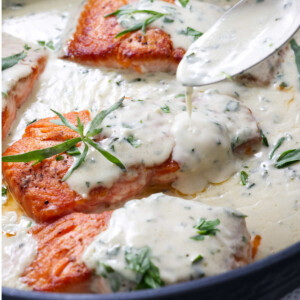
Creamy Tarragon Salmon
If you make this recipe, please leave a star rating and comment.
Ingredients
For the Salmon Fillets
- 4 salmon fillets, 6 ounces each
- ½ teaspoon salt
- ¼ teaspoon ground black pepper
- 2 tablespoons vegetable oil
For the Lemon Tarragon Cream Sauce
- 3 tablespoons butter, divided
- 1 to 2 garlic cloves, finely minced or grated
- ½ cup dry white wine
- ½ cup chicken broth
- 1 tablespoon Dijon mustard
- 1 cup heavy cream
- ¼ cup grated parmesan cheese
- 1 tablespoon honey
- ½ teaspoon salt
- ¼ teaspoon ground white pepper
- ¼ cup fresh lemon juice
- 4 tablespoons chopped fresh tarragon, divided
- 1 to 2 sprigs fresh tarragon, for garnish
Instructions
- Pat the salmon fillets with a paper towel to remove excess moisture, season with the salt and pepper.
- Add the oil to a large non-stick skillet set over medium-high heat. When it is hot but not smoking, add the salmon fillets, skin side down, and sear until golden brown, about 2 to 3 minutes.
- Turn the fillets and sear for another 2-3 minutes until golden brown and just shy of your preferred doneness. The salmon will continue to cook while resting as well as when it is returned to the hot sauce.
- Transfer the salmon to a plate and cover lightly with foil while making the sauce.
- Reduce the heat under the skillet and melt 1 tablespoon of the butter, add the garlic and cook for 30 seconds, do not brown.
- Pour in the wine and cook for 30 seconds to burn off the alcohol. Whisk in the chicken broth and mustard. Increase the heat to medium high, bring to a boil and reduce the mixture by half. This should take about 2-3 minutes.
- Reduce the heat to medium low so the mixture is no longer boiling, stir in the cream, honey, salt and pepper. Simmer the sauce for 4-6 minutes until slightly reduced and a little bit thicker.
- Remove from the heat and stir in the Parmesan, 2 tablespoons of butter, lemon juice and the chopped tarragon.
- Return the salmon fillets to the hot sauce, spooning sauce over each fillet. Cover the skillet and allow the salmon to reheat in the sauce for 2 minutes.
- To serve: Spoon a puddle of sauce on each of four plates and add a salmon fillet, garnish with fresh tarragon.
Notes
- Do not over cook the salmon fillets, we recommend cooking them slightly underdone as the will continue to cook while resting.
- An equal amount of chicken broth may be substituted for wine if preferred.
- To remove the salmon skin from the salmon: When transferring the salmon fillets from the plate to the sauce, slide the spatula between the salmon skin and the flesh, lifting the salmon off the skin.
- Store leftover salmon and sauce in an airtight container in the fridge for up to 3 days. The sauce will continue to thicken as it sits, so when reheating, stir in a splash of chicken broth to loosen it up.
Nutrition
Nutrition information is automatically calculated, so should only be used as an approximation.
 Like this recipe? Rate & comment below!
Like this recipe? Rate & comment below!
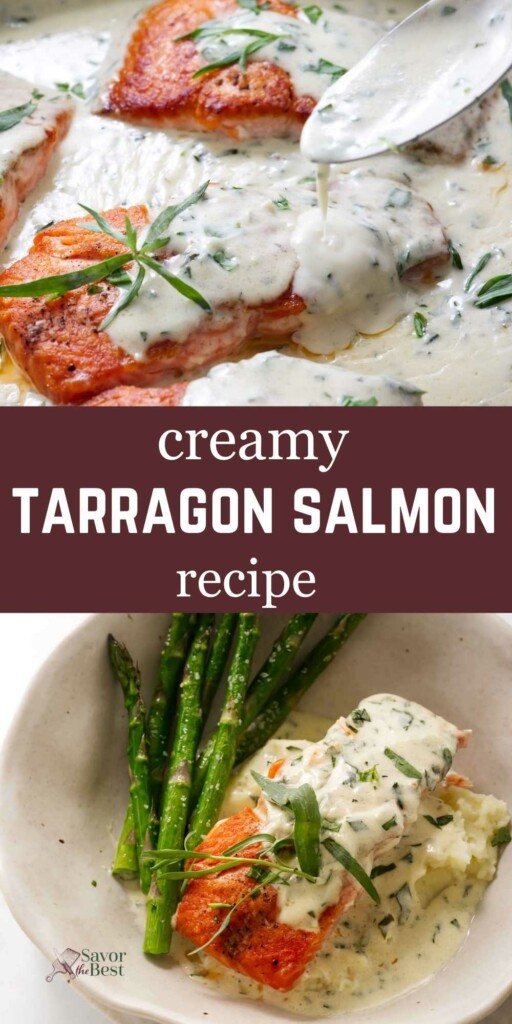
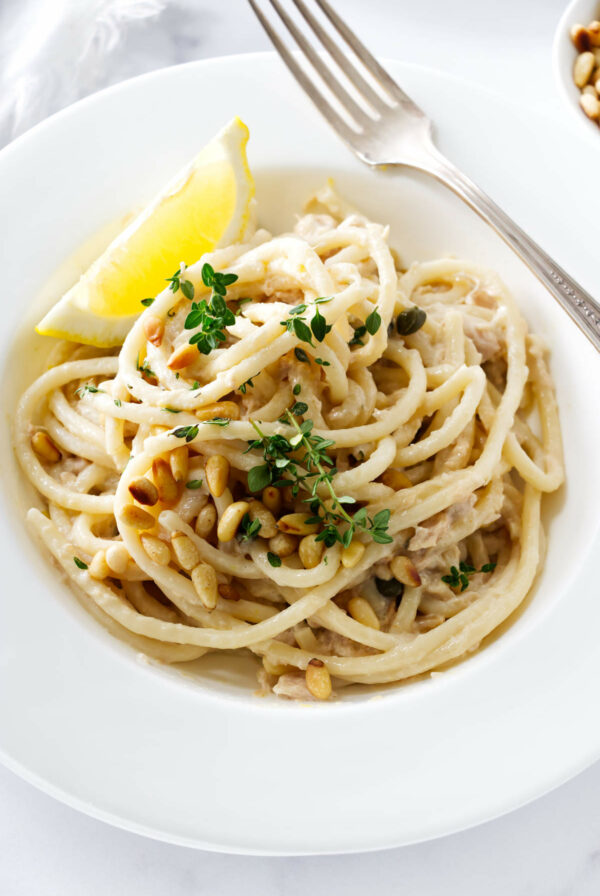
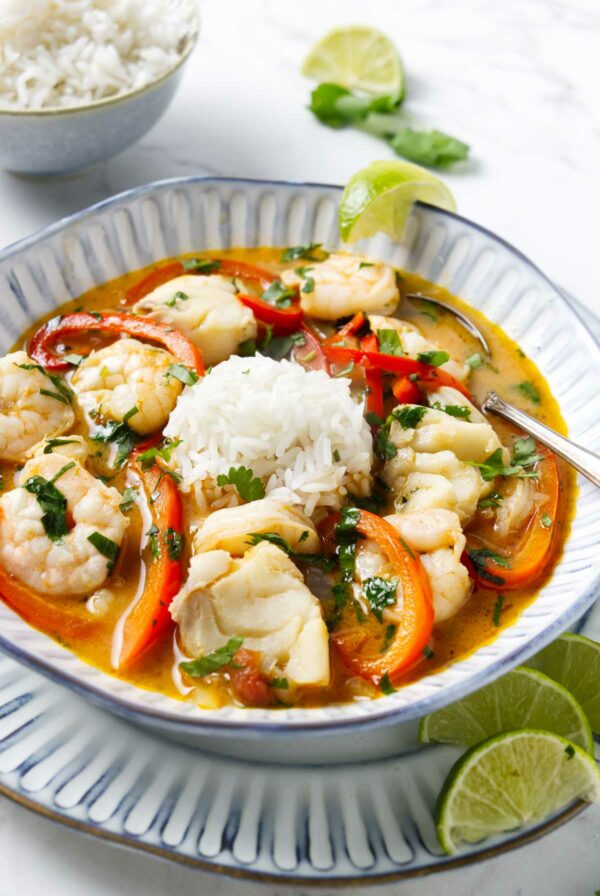
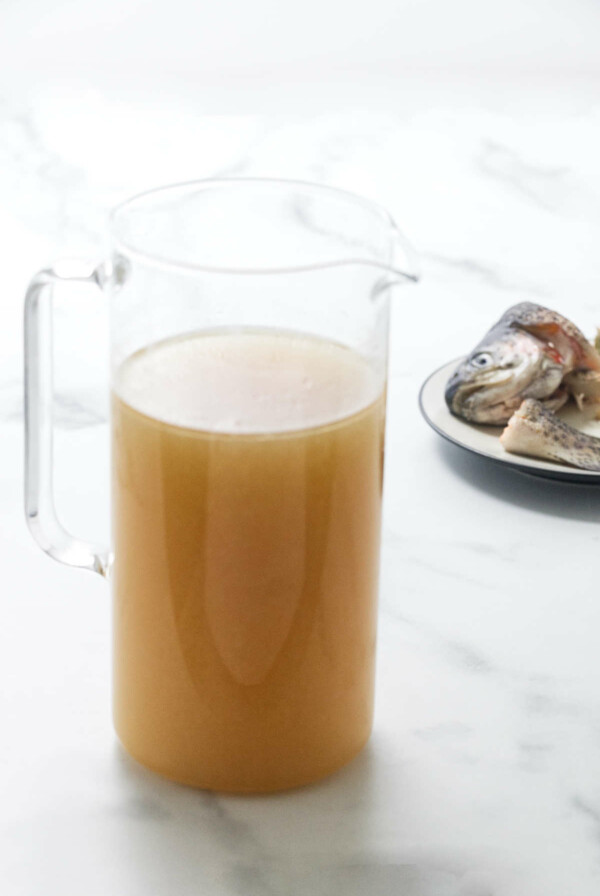











How can I alter this to make it dairy free?
Thanks for the question. You will need to make a few swaps in the tarragon sauce to make this dairy free. Start by swapping the butter for a plant baed butter, then swap the cream for full fat canned coconut milk, and swap the cheese for a dairy free parmesan cheese. You may need to simmer the sauce a little longer to thicken, then taste to adjust the lemon and salt.